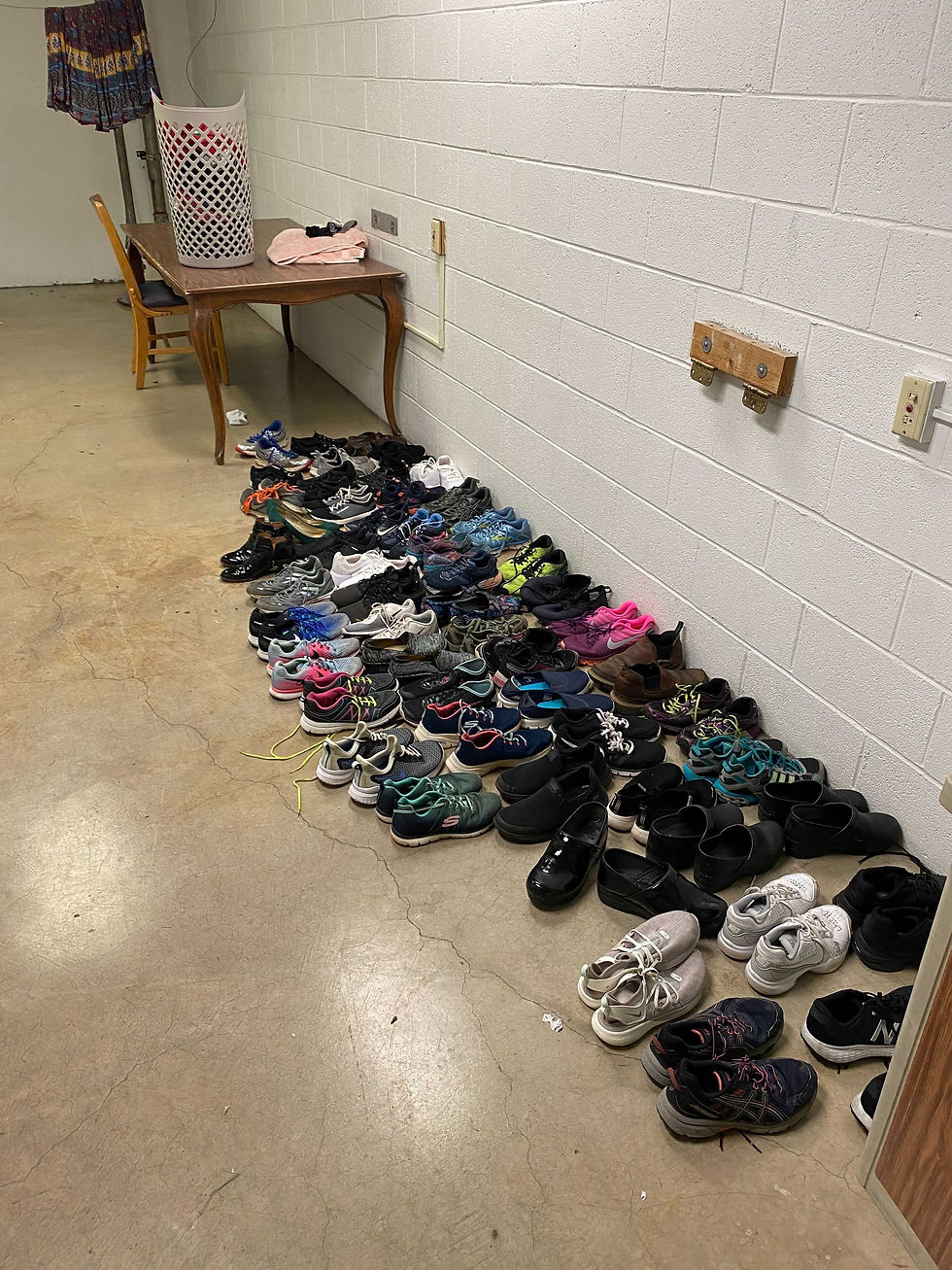Students turn anti-vaccine mandate protest symbol into charitable action
- Collegian staff
- Oct 21, 2021
- 3 min read
Updated: Apr 23, 2022
Oscar Calvete Al-Khalidi
Contributing Writer

In recent weeks, following an “anti-vaccine mandate” protest, there has been an unexpected influx of shoes to Belknap Hall. Brought back by Willamette Students, the shoes were originally left behind, attached to the railings of the Capitol building and containing messages from healthcare workers and other protesters. These messages explained the plight of the protesters.
The protest was part of a movement against the federal government & The White House’s push towards “Vaccinating the Unvaccinated.” The pressure within the public sector on those who do not yet have the vaccine is being met with resistance, the protest was a manifestation of this. The shoes were attached to the perimeter of the Capitol building, as vessels through which the protesters could convey more personal problems.
The shoes that were gathered were salvaged by students from the wreckage of the protest. The proximity of Willamette to the State Capitol is naturally one of the most distinctive features of the University’s campus. It is unusual for a college to be based so near to a government building in this way, and it has very real ramifications on student life and the broader college community. In short, it is impossible for Willamette students and staff to ignore the political presence of the site. The University sits across the road as a spectator, nestled behind the vanguard of the Oregon Pioneer. Led by their curiosity, students often approach the Capitol, crossing State Street in order to better understand the company that their neighbor keeps.
Forrest Davis (18) and others approached this particular protest as freshmen, hushed by their masks, motivated not by inquisition but by inquiry. Perhaps unsurprisingly the majority of attendees, void of masks and emboldened by their cause, responded very negatively to their presence. The students were met with malice, driven away on severely misguided charges of communism. ‘You’re Commies...’ and ‘...you need to get out of here’ were the taunts of the protesters.
This backlash was partially prompted by the sight of a camera. The presence of a camera and a shooting iPhone was sufficient enough to give the protesters cause to reject the group.
Despite the forced nature of their exit, the group still had time to notice an unlikely display of shoes that was assembled across the chain-linked fence of the Capitol. Alongside a TikTok recording that illustrates the behavior of the protesters, a plan for the shoes had also manifested within the group. (This TikTok would go on to have 500K views, drawing the attention of the MeidasTouch group online).
A few hours later, this idea had developed into a greater purpose. Returning to the site, the shoes were quickly collected and ten full rubbish bags were brought back to Belknap.
The ensemble of potentially-pungent and politicized footwear was set out to dry in the washing room of the residence hall. Surprisingly, of the many pairs that were collected, only one odd set of shoes were present. The collection varied in style, size and pricing, however the most direct insight into their former owners came in the notes that had been left within them. They contained appeals to an authority that might condone their cause, rolled into small scrolls and stuffed into the heels. These messages were presented very directly in the order of name, age and plea.
It is difficult to determine the expectations the protesters had for their shoes. It is possible, and has been suggested by Davis that this imagery of hanging shoes alludes to scenes of the Holocaust. “Even if the symbolism wasn’t about the holocaust, the shoes were an opportunity to turn something bad into something good,” he said.
The upshot of the response of this group of students who collected these shoes was a welcome donation to Helping Hands.
The Willamette Campus is incredibly close to the Capitol building; this is a reality that might often, but should not be overlooked. It is easy to imagine the attention that the area attracts, what with the focal point of Oregonian politics being right on WU’s doorstep.
Understanding this, it is reasonable to question how to best respect the space, or react to it. Protests like this one particularly force the question onto students. The excitement and controversy of a protest is difficult to ignore; there is either a call for allegiance or an equally audible and public provocation.
In answer to the question of how students ought to respond to protests such as these, this case could be looked at as an example. Davis and his friends responded to antagonistic treatment with altruism, this is commendable. The significance of their choice to behave nonviolently in response to a situation that might have easily become unmanageable.




Comments